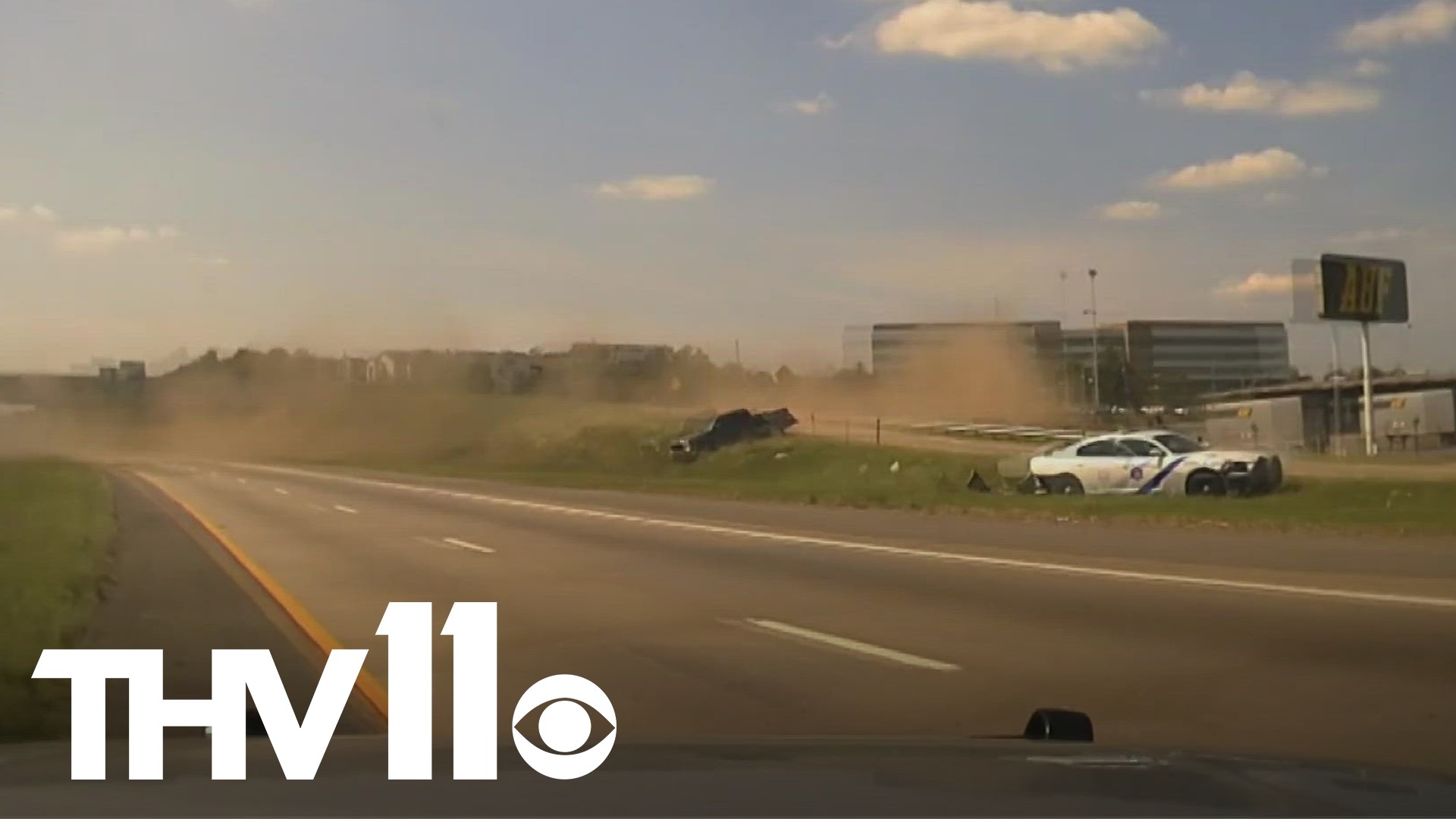LITTLE ROCK, Ark. — Real-life police chases feed a cottage industry of content providers, and the high speeds, tense moments, as well as dramatic endings, are all reasons that streaming channels like LivePD get clicks.
When a pregnant Arkansas woman who was nervous about stopping on the highway ended up flipped upside down by a state trooper in 2020, the crash made headlines— but not because it was spectacular.
It drew attention because the woman sued the state and the trooper for the method used to end the chase. They used the precision immobilization technique or P.I.T. maneuver.
The case wound up in federal court where the state and the woman reached a settlement. Arkansas State Police agreed to change language in its policies for vehicle pursuits. Though two years later, law enforcement experts still consider the P.I.T. maneuver to be an important tool.
"PIT is a specific, trained technique, wherein the officer intentionally collides with the subject vehicle, forcing a spin out," said Kevin Davis, a 39-year veteran of law enforcement who now trains cops on how and when to use force, including using vehicles to stop and catch suspects.
Arkansas troopers receive advanced training and the agency policy about vehicle pursuits reflects that.
Both before and after the controversial 2020 case, if a trooper concludes reasonably and objectively that stopping a chase protects people, they can execute a P.I.T.
Though the settlement has not changed how often troopers do them.
Data from the Arkansas State Police shows an average of 482 pursuits a year from 2018 through 2021, with troopers using a P.I.T. maneuver to stop a chase an average of 108 times. That equals about two a week.
In that time, three suspects died, and 204 others were injured with 43 troopers and 38 civilians also hurt.
Davis explained that a properly trained officer in a properly equipped vehicle can PIT a suspect with a high degree of certainty and safety, but there's an important factor when making that decision.
"Normally, the P.I.T. maneuver is not done at speeds in excess of 35 miles per hour," he said.
A sampling of dashcam video of chases in 2022 showed the use of the technique is often deployed well above those moderate speeds.
An example came on September 15, when Conway Police alerted troopers that a suspect named David Barber was trying to escape arrest for threatening, by flying toward North Little Rock at greater than 100MPH.
Trooper Joseph Killian intercepted the blue Chevy pick-up just past the interchange with I-430 and I-40. He became the primary officer as the suspect weaved across all three lanes and both shoulders through one of the busiest highways in the state.
Five minutes after taking up the chase and just past the complicated I-30 terminal and split to US 67/167. Trooper Mark Blackerby then took charge and delivered a fateful order.
"I got the radio. Just drive," he said. "When you get a chance, when you get past this traffic, PIT him."
Trooper Killian did as ordered.
He drew his cruiser to the left rear quarter of the truck and steered right. It caused the truck to veer to the left into the grass median. The cover of the truck bed could be seen flying away— and Killian, as well as the suspect careen across the oncoming lanes of traffic.
Barber is due in court on March 13 on felony charges of terroristic threatening and fleeing.
Telemetry included with the state police video indicates speeds well above what could be considered "safe" to perform a P.I.T., but Davis explained that circumstances justified deploying it.
"What we do is we balance the person's right to be free from unreasonable searches and seizures, with the government's countervailing interest to taking action or seizing the person," he said.
We asked the new head of the Arkansas State Police, Colonel Mike Hagar, to explain details of how and when these techniques are used, but he was only able to offer a written statement.
"We are very intentional about training troopers to use PIT to end a pursuit quickly to protect the lives and property of the citizens of Arkansas," the statement said.
It added that personnel prioritizes three factors once a chase is on: Reduce the risk of serious injury to innocent members of the public, then law enforcement involved, and then the suspect trying to get away. And because they are trained, the option is available even at high speeds.
The statement said that troopers get 76 hours of special training as recruits, and then eight to 16 hours annually during what they call "in-service" training.
"If their perceptions are that this subject poses a risk of death or serious bodily harm to the innocent public, then whether it's the use of a firearm or a P.I.T. maneuver, or ramming, it can be used," Davis explained.
State police said that troopers know the risks, and Davis wonders if more criminals knew how a chase could end, whether they would think twice.
"The funny thing is, is that giving up in today's society, you're probably gonna get lower reduced bail and get out," he said. "So the risks that you present to the innocent citizens out there just because you want to get away is certainly substantial."

